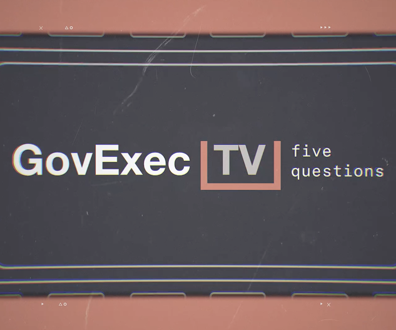
Garry L./Shutterstock.com
4 Imperatives for Smart Savings That Boost Efficiency
Rethinking technology, process, organization and data.
Fiscal austerity will be an enduring challenge for public managers for the foreseeable future, but it can also create an environment and incentives to rethink traditional approaches to mission support and service delivery. In this environment, identifying innovative ways to reduce costs across multiple categories of government spending (e.g., appropriations, user fees) while maintaining and improving performance will be a critical catalyst. Pursuing efficiency as a way to drive change in government identifies opportunities for savings across agency budgets. It also works to change operating models so federal agencies realize long-term efficiencies through the constant search for faster and better ways to deliver services.
Cost-Saving Strategies
In 2010, the IBM Center for the Business of Government published the widely circulated report “Strategies to Cut Costs and Improve Performance.” Since then, the fiscal challenges government executives face have become even more pressing, with an impetus to reduce costs and allocate savings to mission priorities. Constraints imposed by sequestration, continuing resolutions and debt ceilings have made “doing more with less” and “operating smarter with less” an ongoing reality. Even if a larger agreement on long-term spending is reached, that agreement is likely to maintain a tight hold on agencies’ discretionary budgets.
Across government, new strategies for achieving cost savings are in high demand. This goes beyond simple cost cutting to helping the public sector redirect savings into investments in key priorities through gain sharing and other approaches. The imperative to do more with less has never been stronger; government executives can learn from each other as well as from the private sector how to survive and possibly thrive in this environment.
There are emerging opportunities to save costs through improvements in how agencies manage four components of their operations: technology, process, organization and data:
- Technology. When used appropriately, technology can streamline operations and allow employees to shift from transactional processes to strategic insight and customer service. Cloud computing, for example, allows agencies to move away from spending money on multiple, redundant physical data centers or re-creating applications. Infrastructure and applications that once needed to reside in a fixed location under the control of the organization can be quickly, easily and securely accessed in the cloud, generating savings both in upfront capital and ongoing operating costs. Cloud-based services allow agencies to optimize their IT assets simply by reducing their physical inventory. Finally, leveraging the cloud can allow agencies to focus internal resources on making mission and program operations more efficient and effective, even in an environment where funding is tight.
- Process. There are great examples of the power of streamlining processes such as claims and payments, supply chain management, and emergency/disaster response. Best practices provide clear lessons in how to boost mission effectiveness at a lower price. Applying shared services to a broader range of government activities, for example, allows agencies to reduce duplicative back-office operations across multiple bureaus. This facilitates enterprisewide management of finance, HR, acquisition and other mission support functions. Opportunities to optimize shared services are likely to move into front-office activities, where agencies share common missions like education, environmental protection and health care.
- Organization. The model for an effective organization is changing as technology and process enable new management approaches to drive effectiveness. Rather than following a hierarchical structure, which makes collaboration across boundaries is difficult, government executives can capitalize on lessons from entrepreneurial firms and move more toward a collaborative, virtual team model of program management and service delivery. This allows colleagues to work together effectively regardless of their “home office” location, reducing bureaucratic overhead and fostering new ideas. The Presidential Innovation Fellows projects are examples of the benefits reaped from this new, virtual cross-agency organizational structure.
- Data. Information can be used strategically to analyze service patterns and identify wasteful processes that can be streamlined to reduce time and costs (e.g., grant application processes). Increasingly, agencies are using analytics to predict and prevent problems that drain time and resources, such as identifying improper payments in advance rather than after they are sent out. Applying analytics to administrative data sets can also help to determine the cost-effectiveness of alternative interventions.
A more recent IBM Center report, “Fast Government: Accelerating Service Quality While Reducing Cost and Time,” brings fresh insights and illuminating examples of how government executives, by focusing on time and speed, can deliver real and lasting benefits through increased mission effectiveness and lower costs. It outlines strategies and tools that executives can leverage to fundamentally change the way they do business through cycle time reduction and elimination of non-value-added activities. “Fast Government” examines the role of time in bringing value to the public sector, and focuses on innovation, disruptive technologies, predictive analytics and other ways leaders can make government more efficient.
Measuring Savings
It is important that government executives establish baselines from which to measure savings. The first step in determining how much can be saved is to understand the full baseline costs, often called total cost of ownership. Calculating the total costs for a federal agency is different and often more complex than in the private sector. Most government programs have a cost baseline that includes a subset of appropriations for the larger department, salary and expense accounts that are not associated with the program, and sometimes working capital or franchise funds. Piecing these sources together to understand current costs is not a trivial exercise.
A second challenge involves developing financial models and methods that can accurately capture baseline savings. The federal government has experimented with “share in savings” contracting as a way to apply this measurement. This framework incentivizes companies to achieve the measured savings over time. State and local governments have more experience than federal agencies do when it comes to establishing a savings measurement structure.
Even if clear savings opportunities emerge and there is financial transparency, there are barriers that impede the capture and reinvestment of savings capture. Federal budget law requires agencies to have sufficient funds on hand to cover the costs of a contract upfront (including termination costs). This requirement makes the use of a gain-sharing approach less attractive. In addition, agencies must generally spend all of their money in a given fiscal year, while savings often take months or years to materialize. Overcoming such barriers will likely require the use of prototypes and pilots to demonstrate the art of the possible, with agencies working in partnership with their congressional authorization and appropriation partners to build support for pilots and to show how success can scale more broadly.
Government can also collaborate with industry to draw out ideas for savings, perhaps using challenges and prizes as a way to promote innovation. Contracts can be written to create incentives for industry partners to dedicate a portion of their activities to innovation, rapid experimentation, finding better ways to achieve results while lowering costs.
The Power of People
Given the budget realities of today, it is critical to identify opportunities for efficiency, to measure and capture savings, and reward those who deliver cost savings. But at the heart of any effort to make government work faster, better and cheaper is a focus on the people who make the processes run. The most amazing technology in the world will not save time or money, or improve performance, if the people who manage the processes don’t know how to use the new systems or, worse yet, don’t support their adoption. It is essential that executives ensure their employees can acquire the necessary skills to boost efficiency, see the results of their efforts from end to end, and receive rewards and recognition for success. This can also help identify further opportunities to save money, to record those savings and to drive cost-effective improvements that benefit citizens.
(Image via Garry L./Shutterstock.com)






